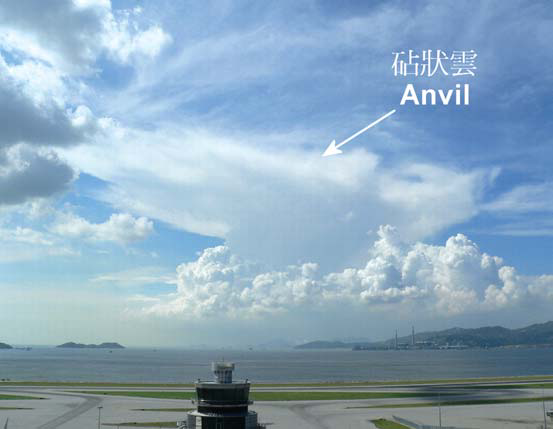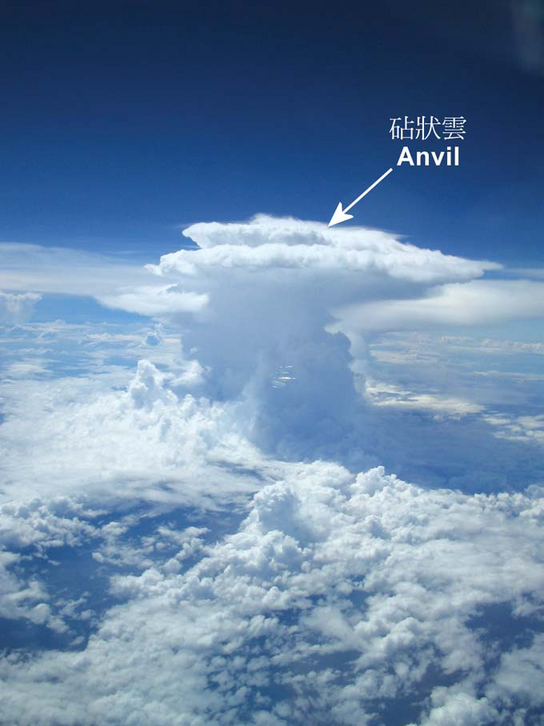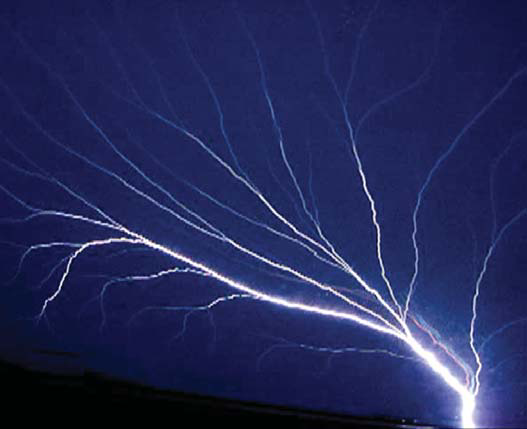Cloud Corner - "Cumulonimbus" spotted from all directions
|
Whenever thunderstorms occur it is usually overcast and dull. Have you thought that the cumulonimbus clouds, which bring about the thunderstorms, has an extraordinary shape? The first picture below was taken by Mr ST Chow, one of our weather observers, in the afternoon on 2 July 2006 at the Hong Kong International Airport towards the northwest direction. A mushroom shaped cloud can be seen to extend from the lower altitudes to the upper atmosphere with a relatively flat top. Shaped like the blacksmith's anvil, the top part of the cumulonimbus is also known as an "anvil". An "anvil" is formed when the intense updraft within the cumulonimbus meets a very stable layer in the atmosphere at about 10 kilometres high. As the updraft is unable to rise further, it spreads out and forms the characteristic anvil shape. Usually the cumulonimbus is rather extensive in size. To have a full view of its appearance, apart from watching it in a place with an open view, it will be even better to watch it from aloft. The picture on the left was taken by Captain Fred Woo from the cockpit at about 12 000 metres aloft west of the Philippines. The "anvil" can be clearly seen. Apart from watching the cumulonimbus on an aircraft, if the plane gets close to or flies into a cumulonimbus, one could even feel the shock of the thunder! The third picture was taken by Captain James Ashby from the cockpit 7 600 metres high while descending to the Phnom Penh International Airport in Cambodia. A number of bright blue- white coloured light beams radiated from the outside of the cockpit. This is the rare "St. Elmo's Fire" caused by ionization of the air under the massive electric field of a thunderstorm. It usually occurs at the top of a mast, pointed tops of a building or an aircraft and is different from ordinary lightning. |
"Anvil" taken by Mr ST Chow in the afternoon on 2 July 2006 at the Hong Kong International Airport.
"Anvil" taken by Captain Fred Woo from the cockpit at noon on 24 November 2003 at about 12 000 metres aloft to the west of the Philippines.
"St. Elmo's Fire" taken by Captain James Ashby at the cockpit on 26 June 2006 at about 7 600 metres above Phnom Penh of Cambodia |


